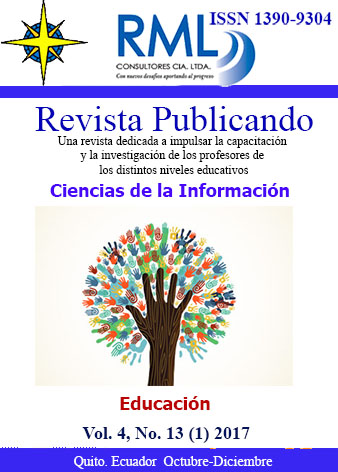Resumen
For the social design of the educational environment in the conditions of an intensively developing region, it is necessary to determine the basic prerequisites and trends of social changes in Russian society.
The preconditions for such changes that we hade identified earlier made it possible to approach the following problem in detail: the problem of determining the trends in the development of the educational environment. The basis of the goal-setting was the idea of studying the trends in the development of the regional educational environment.
A set of research methods was used to consider the situation in the Republic of Tatarstan and included, in particular, sociological observation, sociological survey, content analysis, system analysis.
The educational environment in the work is understood as a set of conditions external to the individual (ensuring its social development in accordance with public expectations, as well as opportunities for its development), which determines socialization as a process and the result of the acquisition and appropriation of experience of social life activity (Education As A Process Of Social Types Formation /2015). The structure of the educational environment includes the value component and three spheres: the central (nuclear), external (developing) and mesosphere (The actual status of the municipal educational environment / 2016).
In accordance, the tendencies of changing the educational environment in relation to its central sphere, the mesosphere, the external sphere and the value component are presented as results.
Referencias
Askadula G. Sabirov and Lilya A. Sabirova.2017. Foresight of social and humanitarian Education 2030 // Man In India, No.97 . Issue No: 16 (2017). Pages: 67-80.
Education As A Process Of Social Types Formation /2015. Ildar Nakipovich Valiev // Mediterranean Journal of Social Sciences. MCSER Publishing, Rome-Italy, Vol. 6 No 4 S1, p.101 – 107.
Education, 2013.Science and Production Integration as a Condition of Dynamics of Social Interaction Stereotypes / Sergey Alekseevich Sedov and Ildar Nakipovich Valiev // World Applied Sciences Journal 27 (Education, Law, Economics, Languauge and Communication): 325 – 328.
Olga vasilyevna shatunova, irina anatolyevna talysheva, milyausha ravilevna shaimardanova. Possibilities of art pedagogics in development of children with special educational needs. The turkish online journal of design, art and communication - tojdac april 2017 special edition. Pp. 151-157.
Schelkunov M.D., Nikolaeva E.M.2014. Glamorous Education: Main Features and Manifestations // International Education Studies; Published by Canadian Center of Science and Education. Vol. 7, no. 11, pp. 97-102.
Sergey A. Sedov and Larisa K. Obukhova, 2015. Integration of education. Science and Production as Reflection of Interdependence of Political, Social, Spiritual and Economic Spheres of Social Life. The Social Sciences, 10: 946-950.
The actual status of the municipal educational environment / 2016. Ildar N. Valiev, Sergey A. Sedov // Journal of Organizational Culture, Communications and Conflict, Volume 20, Special Issue 2, p. 210-217.
Valiev I.N. 2016.Harakteristiki obrazovatel'noj sredy v Elabuzhskom municipal'nom rajone [The characteristics of the educational environment in Yelabuga municipal area] // Kazanskij pedagogicheskij zhurnal, no. 4(117), pp. 202-207.
Valiev I.N. 2016.Stereotipy social'nogo vzaimodejstvija [Stereotypes of social interaction]: monografija. Moscow: Prometej, 126 p.
Vinogradov V.L., Safargaliev E.R. 2015.Educational Networking as Key Factor of Specialist Training in Universities // International Education Studies; Published by Canadian Center of Science and Education. Vol. 8, no. 10, pp. 200-206.
Usted es libre de:
Compartir — copiar y redistribuir el material en cualquier medio o formato
Adaptar — remezclar, transformar y construir a partir del material
La licenciante no puede revocar estas libertades en tanto usted siga los términos de la licencia
Bajo los siguientes términos:
Atribución — Usted debe dar crédito de manera adecuada, brindar un enlace a la licencia, e indicar si se han realizado cambios. Puede hacerlo en cualquier forma razonable, pero no de forma tal que sugiera que usted o su uso tienen el apoyo de la licenciante.
NoComercial — Usted no puede hacer uso del material con propósitos comerciales.
CompartirIgual — Si remezcla, transforma o crea a partir del material, debe distribuir su contribución bajo la lamisma licencia del original.
